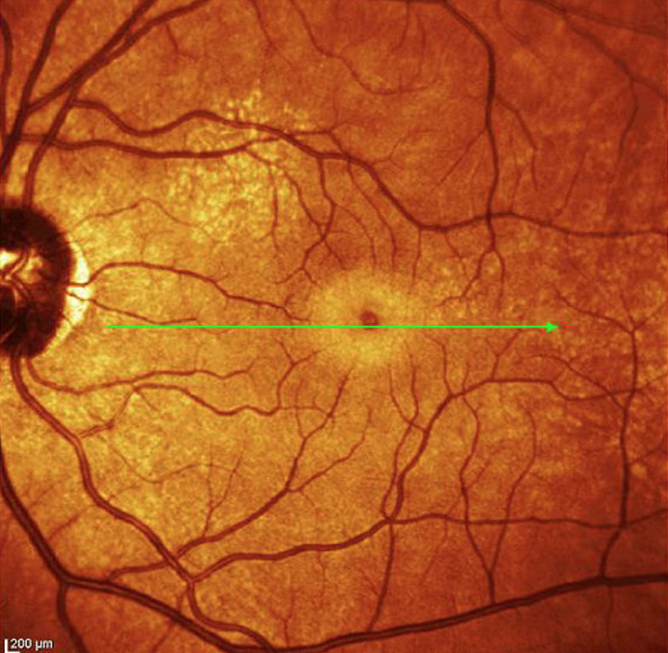Viewing a solar eclipse without proper precautions or eye protection can be dangerous to the retina, the light-sensing tissue of the eye, potentially causing permanent blurred vision and/or blind spots (Figure 2). Solar retinopathy is a condition that occurs when image-sensing photoreceptors are destroyed following initial damage to the retina and adjacent tissue. The injury is similar to thermal burns that can be caused by laser. Depending on the extent of the injury, people have suffered temporary vision loss, residual blurring and/or distortion, or permanent vision loss. In some cases, exposure causes people to develop macular holes, which are perforations in the central retina (known as the macula) that is responsible for the sharp focus needed for reading and recognizing faces. Repair of a macular hole requires surgery.

Retinal photograph and OCT scan image of solar retinopathy shows the characteristic orange-yellow spot at the center of the retina. The OCT shows full-thickness damage through the center of the fovea which may lead to loss of central vision. Photo courtesy of Robin Vora, MD
Viewing a solar eclipse without proper precautions or eye protection can be dangerous to the retina, the light-sensing tissue of the eye, potentially causing permanent blurred vision and/or blind spots. Solar retinopathy is a condition that occurs when image-sensing photoreceptors are destroyed following initial damage to the retina and adjacent tissue. The injury is similar to thermal burns that can be caused by laser. Depending on the extent of the injury, people have suffered temporary vision loss, residual blurring and/or distortion, or permanent vision loss. In some cases, exposure causes people to develop macular holes, which are perforations in the central retina (known as the macula) that is responsible for the sharp focus needed for reading and recognizing faces. Repair of a macular hole requires surgery.
Leave a Reply